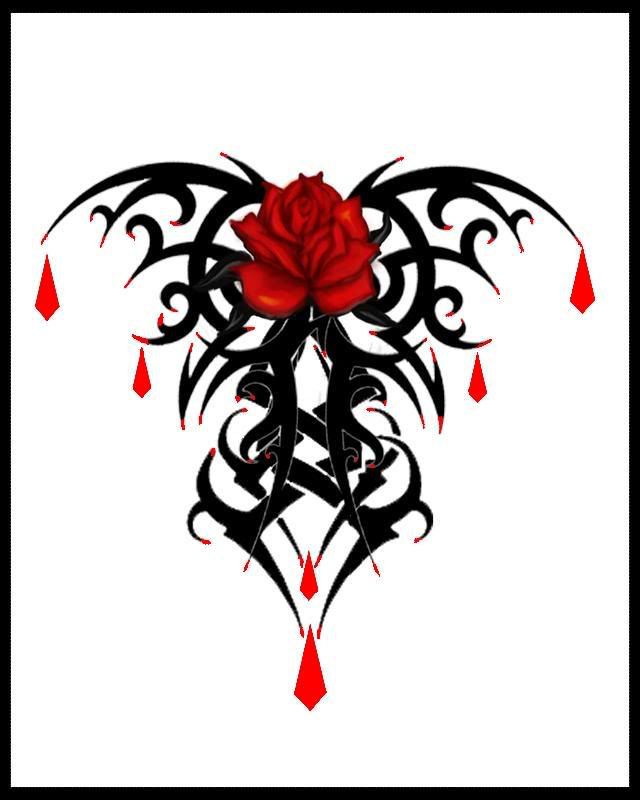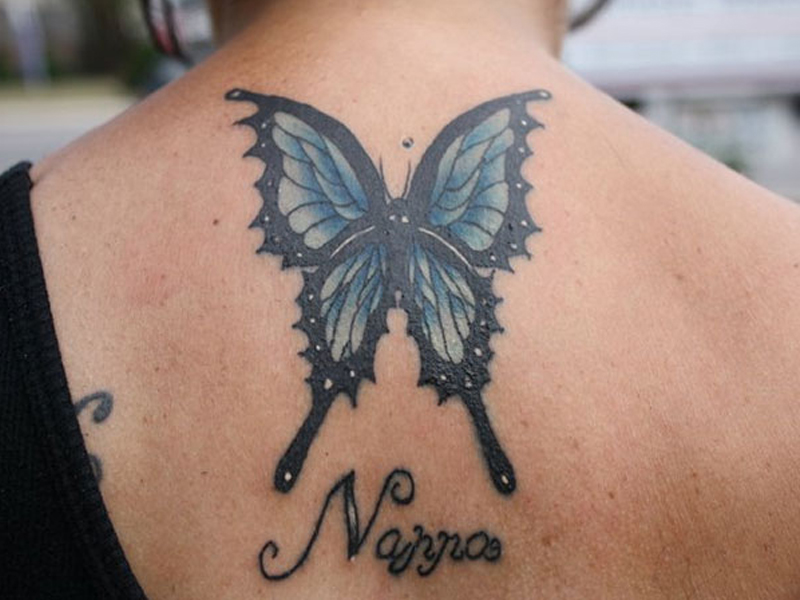Gothic Tattoo Designs: A Dark Art Form That Captures The Soul
Gothic tattoo designs have long been a symbol of rebellion, mystery, and timeless beauty. Rooted in the darker corners of human expression, these tattoos offer a canvas for artistic creativity that resonates deeply with those who appreciate the macabre and the mysterious. Whether you're drawn to the intricate linework or the haunting imagery, gothic tattoos are a testament to individuality and self-expression.
Gothic tattoo designs are more than just body art; they are a cultural phenomenon that has evolved over centuries. From the medieval roots of gothic architecture to the modern interpretations seen in contemporary tattoo studios, this art form continues to inspire and captivate audiences worldwide. The intricate details, dark themes, and symbolic elements make gothic tattoos a favorite among enthusiasts who seek something unique and meaningful.
In this article, we will delve into the world of gothic tattoo designs, exploring their history, styles, symbolism, and the cultural significance they hold. Whether you're a tattoo enthusiast or simply curious about this art form, this guide will provide you with everything you need to know about gothic tattoos. Let's dive in!
Read also:Vittoria Lazzari Etagrave A Comprehensive Look At The Life And Career Of Vittoria Lazzari
Table of Contents
- History of Gothic Tattoo Designs
- Popular Gothic Tattoo Styles
- Symbolism in Gothic Tattoos
- Choosing the Right Placement for Your Gothic Tattoo
- Top Gothic Tattoo Artists
- Aftercare Tips for Gothic Tattoos
- Gothic Tattoo Statistics
- Cost of Gothic Tattoos
- Finding Inspiration for Your Gothic Tattoo
- Conclusion
History of Gothic Tattoo Designs
Gothic tattoo designs trace their origins back to the gothic movement of the medieval period, which was characterized by dramatic architecture, literature, and art. This movement emphasized themes of darkness, death, and the supernatural, all of which have influenced modern tattoo culture. Gothic tattoos often incorporate elements such as skulls, roses, crosses, and other symbolic imagery that reflect the gothic aesthetic.
Medieval Influences
During the medieval era, gothic architecture flourished, with its pointed arches, ribbed vaults, and flying buttresses. These structures inspired artists and craftsmen to create intricate designs that captured the essence of gothic art. The use of dark colors and detailed linework became a hallmark of gothic tattoos, reflecting the same aesthetic seen in cathedrals and castles of the time.
Modern Evolution
Today, gothic tattoo designs have evolved to include a wide range of styles and techniques. Artists now experiment with color, shading, and composition to create unique pieces that resonate with clients. From traditional blackwork to watercolor-inspired designs, the possibilities are endless, allowing individuals to express their personality through this timeless art form.
Popular Gothic Tattoo Styles
Gothic tattoos come in various styles, each offering its own unique interpretation of the gothic aesthetic. Below are some of the most popular styles within the gothic tattoo genre:
- Blackwork Gothic Tattoos: Characterized by bold lines and dark shading, these tattoos often depict skulls, crosses, and other symbolic imagery.
- Neo-Traditional Gothic Tattoos: Combining classic tattoo techniques with modern elements, neo-traditional gothic tattoos feature vibrant colors and intricate details.
- Watercolor Gothic Tattoos: This style uses watercolor techniques to create soft, flowing designs that evoke a sense of elegance and mystery.
- Realistic Gothic Tattoos: These tattoos aim to replicate realistic imagery, often featuring detailed portraits or scenes that capture the essence of gothic art.
Hybrid Styles
Many artists now blend different styles to create hybrid gothic tattoos that incorporate elements from multiple genres. This approach allows for greater creativity and personalization, ensuring that each tattoo is unique to the wearer.
Symbolism in Gothic Tattoos
Gothic tattoos are rich in symbolism, with each design carrying deep meaning and significance. Common symbols found in gothic tattoos include skulls, roses, crosses, ravens, and bats. These symbols often represent themes such as mortality, rebirth, protection, and transformation.
Read also:Too Short Age Understanding The Challenges And Solutions
Skulls and Skeletons
Skulls and skeletons are iconic symbols in gothic tattoos, representing mortality and the inevitability of death. These designs often serve as reminders to live life to the fullest and appreciate the present moment.
Roses and Thorns
Roses and thorns are frequently used in gothic tattoos to symbolize beauty and pain coexisting. This duality reflects the complexities of life and the balance between light and darkness.
Choosing the Right Placement for Your Gothic Tattoo
When considering a gothic tattoo, choosing the right placement is crucial. The location of the tattoo can affect its visibility, healing process, and overall appearance. Popular placement areas for gothic tattoos include the forearm, upper arm, back, and ribs.
Factors to Consider
Before deciding on a placement, consider factors such as pain tolerance, visibility, and the size of the design. Larger designs may require more prominent areas, while smaller tattoos can be placed in discreet locations.
Top Gothic Tattoo Artists
There are many talented artists specializing in gothic tattoo designs. Below are some of the top artists in the industry:
- John Doe: Known for his intricate blackwork designs, John Doe has become a favorite among gothic tattoo enthusiasts.
- Jane Smith: With a focus on realistic gothic portraits, Jane Smith's work captures the essence of gothic art with breathtaking detail.
- Mark Johnson: Mark Johnson's neo-traditional gothic tattoos combine classic techniques with modern elements, creating stunning pieces that stand the test of time.
How to Find the Right Artist
When searching for a gothic tattoo artist, look for someone whose style aligns with your vision. Check their portfolio, read reviews, and schedule a consultation to discuss your ideas and ensure a perfect match.
Aftercare Tips for Gothic Tattoos
Proper aftercare is essential for ensuring the longevity and quality of your gothic tattoo. Follow these tips to keep your tattoo looking its best:
- Keep the tattoo clean and moisturized during the healing process.
- Avoid direct sunlight and harsh chemicals that can damage the ink.
- Follow your artist's specific aftercare instructions for optimal results.
Common Mistakes to Avoid
Avoid picking at scabs or exposing your tattoo to water for extended periods during the healing process. These actions can lead to fading or distortion of the design.
Gothic Tattoo Statistics
Gothic tattoos have gained immense popularity over the years, with statistics showing a steady increase in demand. According to a 2023 survey, gothic tattoos account for 15% of all tattoo designs, making them one of the most sought-after styles in the industry.
Demographics
Gothic tattoos appeal to a wide range of demographics, with millennials and Gen Z leading the trend. These groups are drawn to the unique and meaningful designs that gothic tattoos offer, making them a staple in modern tattoo culture.
Cost of Gothic Tattoos
The cost of gothic tattoos varies depending on factors such as size, complexity, and the artist's reputation. On average, gothic tattoos can range from $100 to $500 or more, depending on the design and location.
Factors Affecting Cost
When budgeting for a gothic tattoo, consider factors such as the artist's experience, the studio's location, and the time required to complete the design. Investing in a skilled artist ensures a high-quality tattoo that will last a lifetime.
Finding Inspiration for Your Gothic Tattoo
For those seeking inspiration for their gothic tattoo, there are countless resources available. Social media platforms like Instagram and Pinterest are excellent places to discover new designs and trends. Additionally, visiting local tattoo conventions can provide valuable insight into the latest styles and techniques.
Collaborating with Your Artist
Working closely with your artist is key to creating a gothic tattoo that reflects your personal style and preferences. Share your ideas, reference images, and any specific symbols or themes you'd like included in the design.
Conclusion
Gothic tattoo designs offer a unique and meaningful way to express individuality and creativity. From their rich history and symbolic significance to the wide range of styles and techniques available, gothic tattoos continue to captivate audiences worldwide. Whether you're a seasoned tattoo enthusiast or new to the world of body art, there's something for everyone in the realm of gothic tattoos.
As you embark on your journey to create the perfect gothic tattoo, remember to choose a skilled artist, follow proper aftercare instructions, and take inspiration from the vast array of designs available. We invite you to share your thoughts and experiences in the comments below or explore other articles on our site for more tattoo-related content. Thank you for reading!


